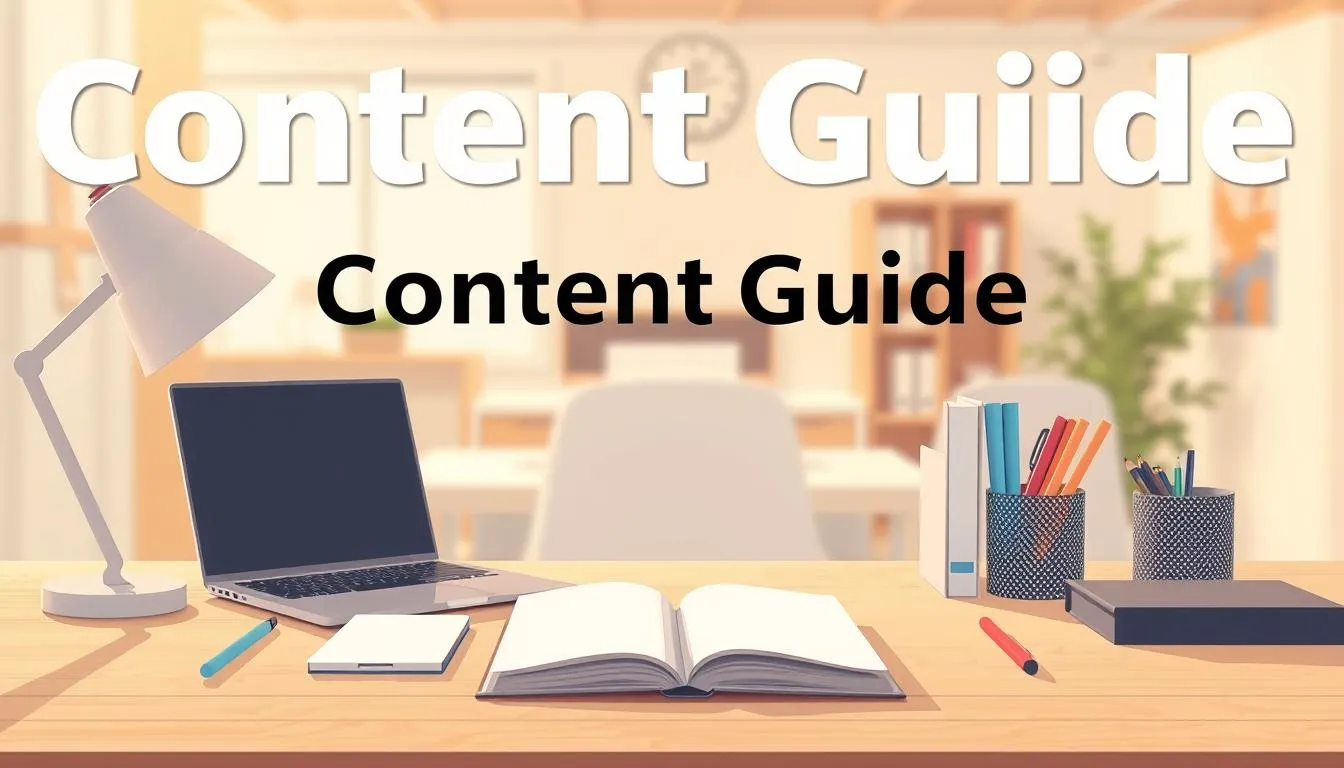Surprising fact: many marketers start earning steady checks around six months when they pair durable topics with strong promotion and clear tracking.
This guide shows how to build a sustainable business by choosing niches that blend long-term demand with current market needs. You’ll learn a clear strategy for content, trust-building, and programs that pay over time.
We separate hype from reality: this is about creating a repeatable asset, not chasing quick wins. Trust, transparent recommendations, and consistent updates are your conversion multipliers.
Along the way, we’ll preview real program benchmarks—like long-term commissions and per-signup payouts—to ground choices in hard numbers. For practical payout examples and program models, see a detailed discussion of commission structures and program examples here.
Key Takeaways
- Pick niches with steady demand and clear monetization paths.
- Prioritize audience-first content and transparent recommendations.
- Use E‑E‑A‑T and honest reviews to earn trust and rankings.
- Track offers and choose programs with repeat-friendly payouts.
- Expect consistent results in about six months with quality work.
Why Evergreen Affiliate Pillars Drive Long-Term Results Today
Content that keeps solving real problems still wins searches and sales long after a trend fades.
Topics that answer persistent questions attract steady traffic and steady conversions. This kind of content compounds when you update it and add simple automation.
We’ve seen momentum show up around the six-month mark for many creators. With regular publishing, testing, and promotion, results start to stabilize as pages rank and trust grows.
Compare quick-win tactics with a compounding approach:
- Quick wins chase buzz and often drop fast.
- Compounding work favors durable formats, recurring commissions, and routine on-page refreshes.
Search trends reward “how to,” comparison pages, and templates. These satisfy audience intent and keep converting even as specific products change. Learn how to create compelling affiliate content that ranks well with our guide on SEO for affiliate blogs.
From community forums we’ve learned that honest reviews and transparent disclosure beat aggressive pitches. New affiliate creators should publish, measure, refresh, and automate.
| Metric | Quick-Win | Compounding | Expected Time |
|---|---|---|---|
| Traffic stability | Low | High | 6+ months |
| Revenue type | One-off | Recurring | Ongoing |
| Maintenance | Low | Moderate | Regular updates |
| Trust impact | Weak | Strong | Improves over time |
Evergreen Affiliate Pillars: The Core Framework
A strong program blends real market demand with partner-friendly incentives to drive durable growth.
Market-offer alignment begins with validation. Match niche demand to your product and confirm the audience is searching for this solution.
Market-Offer Alignment and Niche Fit
Validate search intent, buyer needs, and competitive gaps before committing resources. Real fit reduces churn and raises value for partners.
Trust and Transparency as Growth Multipliers
Lead with clear disclosures, balanced pros and cons, and honest creative. Trust improves long-term conversions and keeps partnerships stable.
Fair, Motivating Commissions and Tiered Rewards
Offer tiered rates, launch bonuses, and rev-share on renewals to reward sustained promotion rather than single pushes.

Reliable Tracking, Cookies, and Clean Attribution
Test pixels, verify cookies, and audit attribution. Clean data means accurate EPC and CR reporting for every partner.
Creative and Content Support that Converts
Provide swipe copy, mobile-first visuals, and templates. Fast, on-brand assets increase conversions and lower partner friction.
Inbox Communication and Proactive Enablement
Use automated onboarding, monthly updates, and targeted tips when traffic spikes but conversions dip.
Compliance and Brand-Safe Promotion Methods
Set allowed traffic rules, require FTC disclosures, and monitor branded keyword bidding to protect reputation.
Ongoing Optimization using EPC, CR, AOV, and LTV
Review metrics by partner and funnel monthly. Ship new angles, refine offers, and document who is managing affiliate operations.
| Core Area | Primary Action | Key Metric |
|---|---|---|
| Fit & Validation | Confirm search demand & product-market match | Conversion Rate (CR) |
| Rewards | Tiered payouts, renewals, bonuses | Average Commission / EPC |
| Tracking | Pixel tests, cookie checks, attribution QA | EPC & Accurate Reporting |
| Enablement | Swipe files, templates, inbox updates | Partner Retention & Conversions |
Evergreen Niches that Compound Over Time
Pick markets that let you publish useful content consistently and earn over time. Below are durable categories where search demand, monetization depth, and reputable companies align to create steady income.
Personal Finance
Personal finance covers credit card comparisons, budgeting apps, and investment platforms. Focused angles like retirement planning or professionals (doctors, nurses) often convert better than generic guides.
Programs from apps such as Acorns, Robinhood, and Webull can pay flat or recurring commissions. Use clear reviews and comparison content to stack recurring and one-time payouts.
Health and Fitness
Home workouts, nutrition plans, and wellness products stay in demand. Product reviews, coaching tie-ins, and diet-specific guides diversify income streams.
Brands like Bulletproof and Trainerize run programs that reward content creators and creators who publish consistently.
Technology and SaaS
Hosting, VPNs, landing page builders, and plugins drive steady conversions. SeedProd’s 30% with lifetime renewals is a strong example of recurring-friendly program design.
Review tools, build tutorial content, and link to reliable companies for predictable payouts.
Travel
Specialized guides—remote work stays, sustainable itineraries—pair well with booking platforms and insurance offers. Booking.com and Tripadvisor provide tiered models that scale.
Add gear and insurance bundles to increase average order value and diversify product coverage.
Pets
Premium foods, smart pet tech, training courses, and insurance attract loyal audiences. Chewy’s $15 per new customer plus a percentage on orders is a useful benchmark.
- Choose a niche that matches your expertise and has multiple monetization paths.
- Map content to the purchase journey: guides, comparisons, and templates work well.
- Validate offers and tracking with reputable companies before heavy promotion.
| Niche | Example Programs | Typical Payouts |
|---|---|---|
| Finance | Acorns, Robinhood | Flat or recurring |
| Tech/SaaS | SeedProd, hosting | 30%+ / lifetime renewals |
| Pets | Chewy | $15 + % |
Content that Prints Money: Evergreen Formats and Topic Pillars
The right guide formats make content a durable revenue engine for product-focused audiences.
Pillar guides and buyer’s guides should live forever in structure: clear intent, a stable URL, and an annual refresh plan.
Build long-form guides that answer who, why, and how. Include a concise table of contents so readers jump to the section they need.
Pillar Guides and Buyer’s Guides without Expiration Dates
Write deep guides that compare products, show use cases, and include honest pros and cons. Keep the URL and search intent steady while updating specs yearly. For detailed guidance on creating effective affiliate content, check out the ultimate guide to creating how-to affiliate posts.

Comparison Hubs, Templates, and Problem-Solution Walkthroughs
Create comparison hubs that link to focused reviews and templates. Step-by-step walkthroughs shorten time-to-value and boost conversions.
Updating Cadence: Refreshes that sustain rankings and conversions
Refresh specs, pricing, screenshots, and internal links on a set cadence. Automate an email sequence that repurposes the post into a short funnel.
- Use conversion elements: CTAs, FAQs, and a light landing page for high-intent visitors.
- Balance depth and breadth: individual reviews plus category shortlists.
- Write for the audience: anticipate objections and explain tradeoffs clearly.
Layer in product roundups and document interlinking strategies to strengthen topical authority. Honest reviews and automation often lift long-term conversions and lifetime value.
Trust, E‑E‑A‑T, and YMYL: The Foundation of Conversions in Sensitive Niches
When money or health is at stake, clear credentials and accurate data become non-negotiable. Readers in this niche expect visible signals that a site knows what it is doing.
E‑E‑A‑T stands for Experience, Expertise, Authoritativeness, and Trustworthiness. Google treats financial and health pages as YMYL, so strong E‑E‑A‑T boosts rankings and reduces refund risk.
Show credentials on author bios and review pages. Link to public profiles, certifications, and relevant publications so readers can verify expertise.
Maintain transparency with clear disclosures, up-to-date pricing, and accurate specs. For affiliate marketing, disclose relationships and keep screenshots and feature lists current.
- Cite reputable sources and format references consistently.
- Collect real testimonials and short use-case stories to prove outcomes.
- Publish policy pages: privacy, editorial standards, and affiliate disclosure.
Train contributors on YMYL guardrails so every piece of content follows industry expectations. Thoughtful, accurate content protects users and lifts long-term conversions.
Action for marketers: audit your top pages today—update author info, add clear contact paths, and verify every outbound claim. Small fixes can have outsized impact on trust and performance.
From Partners to Allies: Building Affiliate Relationships that Last
Strong partnerships start when recruitment targets creators who already solve the same user problems. Recruit intentionally: use customer outreach, SEO prospecting, influencer deals, and listings on networks like ShareASale, Impact, Awin, or PartnerStack.
Onboarding sets the tone. Send an automated welcome, give dashboard access, outline payout timelines, and list best practices and forbidden traffic sources. Include a clear program overview, FAQs, and brand guidelines so creators launch fast.
Practical playbook
- Find creators ranking for “best X” or “[Product] alternatives” and invite power users.
- Provide swipe copy, banners, and editable Canva templates to lower friction.
- Show examples of content that converts and state commission terms upfront.
Keep communication warm and fast
Use a dedicated inbox, priority queues, or a shared Slack channel to resolve issues quickly. Assign a program manager and define SLAs so partners always know who to contact.
“Traffic is up; try this CTA to lift conversions.”
Recognize top partners with tiered rates or short-term boosts. Share CTR insights, seasonal promos, and co-create case-study content to deepen long-term affiliate relationships.
Programs, Payouts, and Measurement that Keep Affiliates Performing
Set the program rules early: cookie windows, allowed traffic, and payout cadence matter more than a high rate.
Program design should match your business goals. Choose CPA or CPL when you need new users fast. Use rev share and renewal commissions to reward promoters who drive long-term revenue.
Roles and operational rules
Assign an affiliate program manager to coordinate Finance/Ops, Marketing, and Legal. Finance handles payouts, tax forms, and fraud checks. Marketing supplies creative. Legal defines terms and disclosure rules.
Metrics that guide optimization
Track EPC, CR, AOV, and LTV by partner and funnel. Use PartnerStack, CJ, or network dashboards for transparent reporting. Forecast revenue from top partners using historical EPC and LTV.
- Define commissions, cookies, and payout timelines to build trust.
- Provide partner tools and refresh creatives quarterly.
- Run QA on tracking and flag anomalies quickly.
| Program Type | When to Use | Example Rate |
|---|---|---|
| CPA / CPL | Efficient acquisition | $10–$200 per lead/sale |
| Rev Share | Maximize LTV | Pipedrive: 33% recurring (12 months) |
| High Initial + Renewal | Large first sale plus retention | MacKeeper: up to 55% first sale, 20% renewals |
| Lifetime % | Long-term promoter incentives | Notion: up to 50% with 90-day cookie |
“Be transparent: publish rules, share dashboards, and treat partners like long-term relationships.”
For a deeper look at SaaS program structures and examples, see this guide on top SaaS affiliate programs.
Automation that Scales: Email, Workflows, and Evergreen Funnels
Automating key touchpoints turns a heavy launch into a low-maintenance revenue stream. Use workflows to keep content alive, capture leads, and nudge readers toward valuable offers without constant manual work.

Lead Magnets and Segmented Autoresponders that sell softly
Capture leads with small, useful lead magnets tied to each pillar post. Segment by intent so messages feel personal and relevant.
Build pre-written sequences that mix helpful content with occasional soft-sell offers. Test cadence and subject lines to protect deliverability and sender reputation.
Repurposing Engines: Social schedulers and content refresh loops
Use tools to schedule recurring shares of top content and to republish refreshed posts. Create a quarterly refresh loop for screenshots, FAQs, and updated comparisons.
Landing Pages and Tools: High-converting CTAs and page builders
Pair high-intent guides with focused landing pages. Test CTAs, form placement, and benefit-led headlines to lift conversions.
- Standardize templates so launching a new sequence in any niche is repeatable.
- Integrate program-specific angles in sequences, such as rev-share trials, without overwhelming the list.
- Track funnel health end to end: list growth, open/click rates, dwell time, and assisted conversions.
“Automation makes income more passive after the initial heavy lift.”
For a practical list of marketing automation tools that connect email, social, and landing pages, see this guide on marketing automation tools. SeedProd is a strong option for builders—its 30% lifetime commission is notable for program-minded creators.
evergreen affiliate pillars in Action: A Six‑Month Roadmap
Start with a narrow, well-understood niche and treat month one like a research sprint.
Months 1–2: pick a precise niche you know, set up a clean site, and publish 5–10 cornerstone guides of 2,000+ words that solve real problems. These long pieces become the foundation for later growth.
Months 3–4: ramp up production. Publish 2–3 quality posts per week and promote them in communities, forums, and relevant groups without spamming. Use each post to test offers and page layouts.
Months 5–6: analyze winners. Improve top posts, add stronger CTAs, build segmented autoresponders, and tighten internal linking. Many creators see their first $100 month around this time when they focus on conversion wins.
- Schedule technical work: schema, speed, and accessibility fixes.
- Test program fits early (CPL, CPA, rev share) and match offers to intent.
- Track with GA, GSC, and network dashboards to measure EPC, CR, and engagement.
Set weekly goals and keep a simple reporting cadence. Expect slow starts; consistency beats short-term vanity metrics. Reinvest small gains into better creatives, outreach, and content upgrades to speed results.
Need a deeper operational guide? See a practical resource on program design and growth at this program guide.
Real-World Inspiration: Programs and Tactics Working Today
Real program wins come from pairing clear landing experiences with offers that match intent.
Finance and Credit
Example setup: a focused comparison page with a high-intent landing page that hosts Credit Karma widgets. Credit Karma commonly pays $6 per signup and uses a 30-day cookie via Awin or Impact.
Why it works: concise comparisons plus on-page banners and widgets speed signups and lower friction for readers researching credit card options.
Tech and SaaS
SeedProd offers 30% commissions with lifetime renewals. Notion runs up to 50% via PartnerStack with a 90-day cookie. Pipedrive pays 33% recurring for 12 months.
These products reward ongoing promotion and make recurring revenue a core value of many creators’ funnels.
Travel and Pets
Booking.com uses tiered commissions starting around 25% of Booking’s take. Tripadvisor can pay up to 50% of hotel revenue. For pets, Chewy pays $15 per new customer plus 4% on orders via Partnerize.
Segmented content—like puppy care vs. senior pets—boosts relevance and average order value for these partners.
- Concrete setups: intent-matched content → landing page → widgets or promo codes.
- Program assets: dashboards, banners, promo codes, and API access speed optimization.
- Trends: creators co-build tutorials and YouTube funnels that feed steady clicks and trials.
- Relationships: responsive partner teams and creative refreshes correlate with better performance.
“Informative content → intent-matched offers → fast-loading landing experiences → transparent disclosures.”
Action for affiliate marketers: benchmark offers, cookie windows, and dashboards before you commit heavy content. Small tests save time and increase long-term value.
Conclusion
Real results appear when creators align products to audience needs and measure what matters.
Durable success comes from picking the right niche, publishing useful posts, and prioritizing trust and compliance in YMYL areas. Over time, consistent updates and clear tracking turn effort into steady revenue and income.
Choose affiliate programs with transparent commission terms, reliable tracking, and helpful assets. Build strong partnerships and relationships by communicating early, rewarding performance, and solving problems fast. To understand the differences between various monetization approaches, read our comparison of affiliate vs sponsored posts.
Watch EPC, CR, AOV, and LTV by partner and funnel to guide improvements. If you’re a new affiliate, commit to the six-month plan: publish, test, double down on winners, and keep improving.
Pick one niche, pick a set of products, launch one pillar post this week—lead with honesty and value, and the business and partnerships will follow.
FAQ
What are the core components of a long-term affiliate program that consistently drives revenue?
A high-performing program centers on market-offer alignment, clear commission structures, reliable tracking, and content support. Choose products that fit your niche, set fair or tiered rewards, use clean attribution tools like server-side tracking or well-configured cookies, and provide creatives, landing pages, and brief guides that help partners convert.
How do I pick niches that compound value over time?
Focus on durable markets with steady demand such as personal finance (credit cards, budgeting apps), health and fitness, SaaS and hosting, travel services, and pets. Evaluate search trends, average order value (AOV), lifetime value (LTV), and regulatory risks before committing.
What metrics should program managers track to optimize partner performance?
Track earnings per click (EPC), conversion rate (CR), average order value (AOV), and lifetime value (LTV) by partner and funnel. Monitor click-to-sale lag, refund rates, and cohort retention to make smarter commission and creative decisions.
How can partners build trust quickly with their audience in YMYL niches?
Emphasize transparency, author credentials, and up-to-date content. Use clear disclosures, cite reputable sources, and showcase case studies or real results. For finance or health offers, follow compliance and be conservative with claims to protect conversion and brand reputation.
What tracking and attribution approaches reduce disputes and lost commissions?
Combine first-party cookies with server-to-server (S2S) postbacks and unique offer tokens. Use link shorteners or landing pages that persist tracking, and keep comprehensive logs so program managers and partners can reconcile clicks, leads, and conversions.
How often should content be refreshed to maintain search rankings and conversions?
Set a regular update cadence—typically every 3–12 months depending on the niche. Refresh data, update pricing and offers, test headlines, and swap creatives. Small, consistent updates preserve E-E-A-T and help pages stay relevant without full rewrites.
Which content formats convert best for product and SaaS offers?
Long-form pillar guides, in-depth buyer’s guides, comparison hubs, templates, and problem-solution walkthroughs perform well. Combine evergreen tutorials with optimized landing pages and high-converting CTAs built in page builders like SeedProd or Elementor.
How do program designers balance CPA, CPL, and rev-share models?
Match the model to product margins and partner type. Use CPA for clear direct-response offers, CPL for lead-gen with high LTV, and rev-share for subscription SaaS or products with recurring revenue. Consider hybrid deals and bonuses for top performers.
What onboarding materials help new partners hit the ground running?
Provide a compact welcome pack: dashboard access, tracking setup steps, creatives, sample email flows, landing page templates, and quick-win promo ideas. Include contact info for an affiliate program manager and a short FAQ to reduce friction.
How important is communication between brands and partners, and what channels work best?
Communication is critical. Use a mix of email sequences, shared Slack or Discord channels, and scheduled check-ins. Timely updates about offers, creatives, and policy changes improve results and strengthen long-term relationships.
Which tools help automate campaigns and scale partner performance?
Use email automation for segmented autoresponders, CRM workflows, social schedulers for repurposing, and landing page builders for split testing. Platforms like Mailchimp, ActiveCampaign, and conversion-focused page tools speed execution and measurement.
How do I ensure compliance and brand-safe promotion across partners?
Provide clear brand guidelines, approved creatives, and a dos-and-don’ts list. Monitor promotions for misleading claims, unauthorized couponing, or disallowed channels. Enforce rules with tiered penalties and regular audits.
What incentives boost partner motivation beyond base commission?
Offer performance tiers, bonuses for milestones, limited-time CPA uplifts, contests, and recurring renewal commissions. Non-monetary perks—early access to products, exclusive creatives, and co-marketing support—also build loyalty.
Can small publishers compete with larger partners in high-competition niches?
Yes. Niche-focused content, high-quality buyer guides, and targeted long-tail keywords can outperform broad sites. Focus on trust-building, specific use cases, and partnerships with relevant tools or brands to carve profitable segments.
How should I handle returns, refunds, and chargebacks in commission calculations?
Define a clear hold period before paying commissions, adjust for refunds in reconciliation, and maintain transparent reporting. Use contract terms that specify chargeback liabilities and include automated reconciliations in your affiliate platform.
What role do landing pages play in maximizing conversions for credit card and finance offers?
High-intent landing pages tailored to product benefits and quick eligibility checks reduce friction and increase CR. Include trust signals, clear CTAs, and compliance language. Test headline variations and form lengths to find optimal balance.
How can partners reuse content across channels without hurting SEO or performance?
Repurpose core content into short videos, email sequences, social posts, and downloadable templates while keeping the primary web asset as the canonical source. Use excerpts and summaries on other platforms with links back to the main guide.
